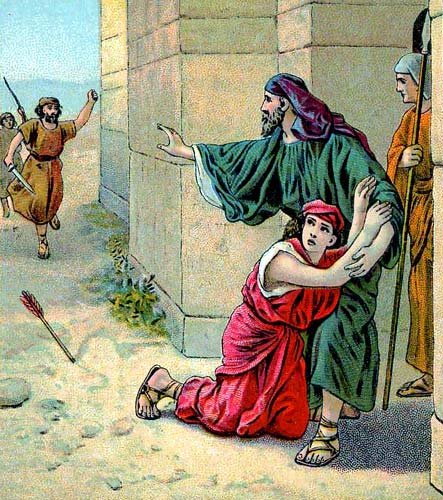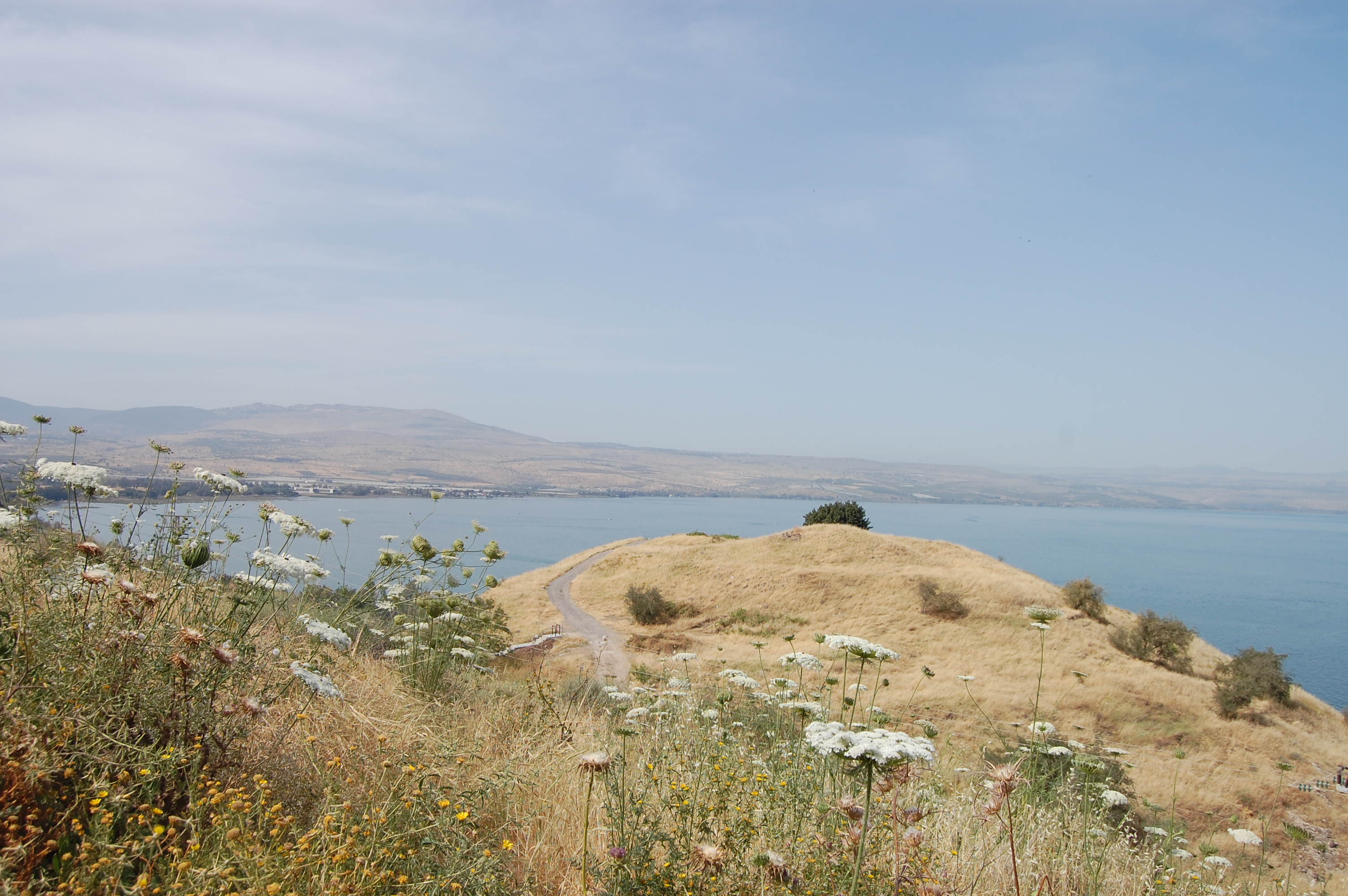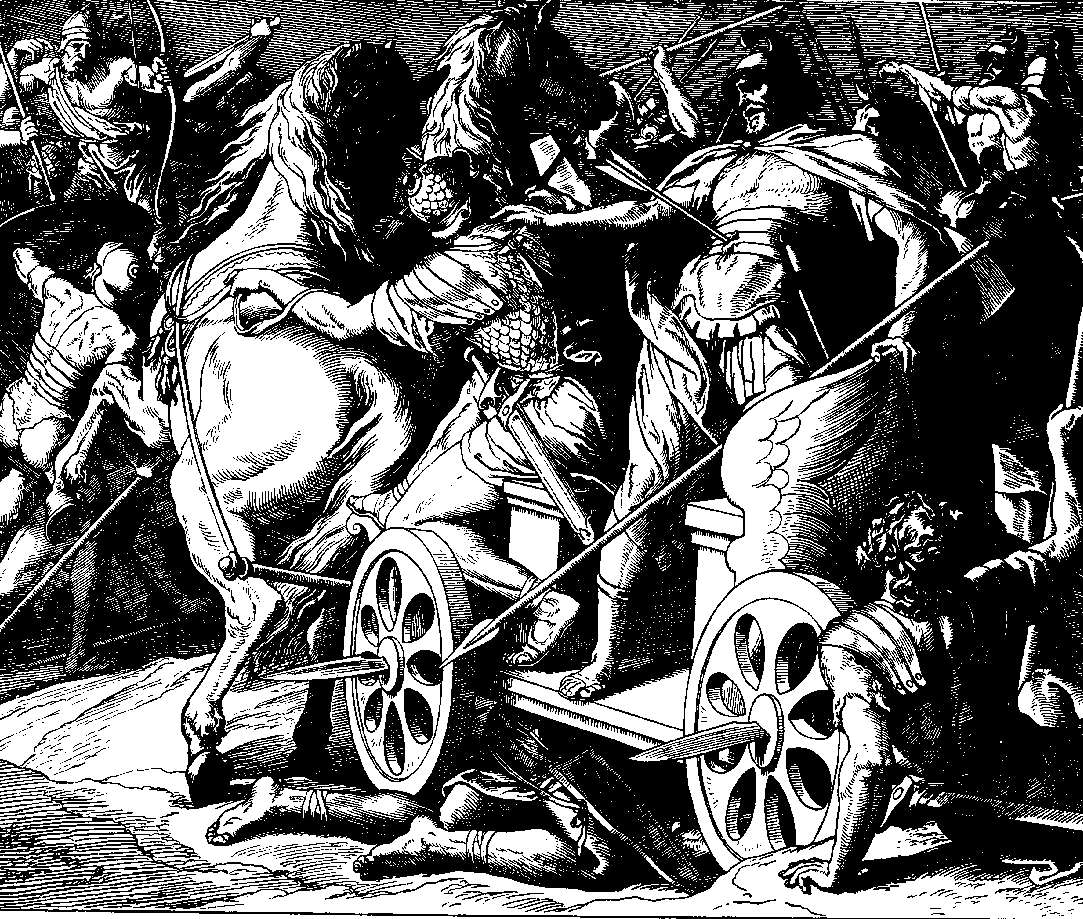|
Merarite
The Merarites were one of the four main divisions among the Levites in Biblical times. The Bible claims that the Merarites were all descended from the eponymous Merari, a son of Levi, although some biblical scholars regard this as a postdictional metaphor, providing an origin myth of the connectedness of the clan to others in the Israelite confederation;.''Jewish Encyclopedia'' The Bible ascribes a specific religious function to the Merarites, namely care of the framework - posts, crossbars, courtyard, tent pegs, etc. - of the sanctuary. This differentiation of religious activity between the Merarites and other Levites, in particular the Aaronids, is found only in the Priestly Code, and not in passages that textual scholars attribute to other authors. According to the Book of Joshua, rather than possessing a continuous territory, the Merarites possessed several cities scattered throughout the geographic region of Gilead, as well as in the south of the Galilee, the latter b ... [...More Info...] [...Related Items...] OR: [Wikipedia] [Google] [Baidu] |
Levitical City
In the Hebrew Bible, the Levitical cities were 48 cities in ancient Israel set aside for the tribe of Levi, who were not allocated their own territorial land when the Israelites entered the Promised Land. Numbers 35:1-8 relates God's command to Moses to establish 48 cities for the Levites, of which six would also function as Cities of Refuge to which manslayers could flee. Each settlement was to comprise a walled city and the common land around it for pasture, measured radially as one thousand cubits in each direction, or as a square measuring two thousand cubits along each side. The land for the cities was to be 'donated' by the host tribe and was allocated to the Levites according to their tribal sub-divisions. 13 cities were for the Aaronites. 13 cities were for the Gershonites. 10 cities were for the Kohathites. 12 cities were for the Merarites. The six cities which were to be Cities of Refuge were Golan, Ramoth, and Bezer, on the east of the Jordan River, and Kedesh, S ... [...More Info...] [...Related Items...] OR: [Wikipedia] [Google] [Baidu] |
Merari
According to the Torah, Merari (Hebrew: , ''Mərārî'') was one of the sons of Levi, and the patriarchal founder of the Merarites, one of the four main divisions among the Levites in Biblical times. The Hebrew word ''Merari'' means ''sad'', ''bitter'' or ''strong'' (in the sense that a dish with a bitter taste might be said to have a "strong" taste). The Merarites were charged with the transportation and care of the structural components of the tabernacle. Richard Elliott Friedman attributes the genealogy to the Book of Generations, a document originating from a similar religiopolitical group and date to the priestly source. According to some biblical scholars, the Torah's genealogy for Levi's descendants is actually an aetiological myth reflecting the fact that there were four different groups among the levites - the Gershonites, Kohathites The Kohathites were one of the four main divisions among the Levites in biblical times, the other three being the Gershonites, the Mer ... [...More Info...] [...Related Items...] OR: [Wikipedia] [Google] [Baidu] |
Tel Yokneam
Tel Yokneam, also spelled Yoqne'am or Jokneam ( he, תֵּל יָקְנְעָם), is an archaeological site located in the northern part of the modern city of Yokneam Illit. It was known in Arabic by a variant name, Tell Qamun ( ar, تل قامون), believed to be a corruption of the Hebrew name. The site is an elevated mound, or tel, spanning around 40 dunams (10 acres) and rising steeply to a height of . ''Yoqne'am I'', pp. 1–2 With a few brief interruptions, Yokneam was occupied for 4,000 years, from the Middle Bronze Age to the Ottoman Empire. Ben-Tor, 1987, p. 2 The ancient settlement at Tel Yokneam is first mentioned in Egyptian sources as a city conquered by Pharaoh Thutmose III.Yuval Goren, Israel Finkelstein, and Nadav Na'aman. "Petrographic Investigation of the Amarna Tablets." ''Near Eastern Archaeology'' 65, no. 3 (2002): 202–203. It appears later in the Hebrew Bible as a city defeated by Israelite leader Joshua and settled by the Tribe of Levi.Elizabeth Bloch-Sm ... [...More Info...] [...Related Items...] OR: [Wikipedia] [Google] [Baidu] |
Jazer
Jazer (or Jaazer) was a city east of the Jordan River, in or near Gilead, inhabited by the Amorites. It was taken by a special expedition sent by Moses to conquer it towards the end of the Israelites' Exodus journey from Egypt. From the Septuagint (which reads Ἰαζήρ for עז in Numbers xxi. 24) it appears that Jazer was on the border of Ammon. As an important city it gave its name to the whole of the surrounding territory - a "Sea of Jazer" is mentioned in Jeremiah xlviii. 32. Jazer is stated to have been a fertile land fit for the raising of cattle and a place having many vineyards. It was occupied by the children of Gad, by which tribe it was allotted as a Levitical city to the Merarite Levites. In the time of David it seems to have been occupied by the Hebronites, who were descendants of Kohath. It was chosen as one of the stations by David's officers who were sent to number the children of Israel. According to 1 Maccabees and Josephus (paraphrasing 1 Maccabees, most l ... [...More Info...] [...Related Items...] OR: [Wikipedia] [Google] [Baidu] |
Heshbon
Heshbon (also Hesebon, Esebon, Esbous, Esebus; ar, حشبون, links=no, la, Esebus, links=no, he, חשבון, links=no, grc, Ἐσεβών, Ἐσσεβών, Ἐσβούτα, Ἐσβούς, Ἔσβους, Ἔξβους, links=no) were at least two different ancient towns located east of the Jordan River in what is now the Kingdom of Jordan, historically within the territories of ancient Ammon. The Bronze Age Heshbon of biblical King Sihon has not been identified. The town of Esbus from the Roman and Byzantine period has been identified with a tell (archaeological mound) known in Arabic as Tell Hisban or Tell Ḥesbān. Location of Tell Hisban The Roman and Byzantine town is believed to have been located at the ruin called Hesbân or Hisban, about southwest of Amman, and to the north of Madaba, on one of the highest summits of the mountains of Moab. A large ruined reservoir is located east of the place, and below the town there is a fountain. Biblical reference to Heshb ... [...More Info...] [...Related Items...] OR: [Wikipedia] [Google] [Baidu] |
Mephaath
This is a list of places mentioned in the Bible, which do not have their own Wikipedia articles. See also the list of biblical places for locations which do have their own article. A Abana Abana, according to 2 Kings 5:12, was one of the " rivers of Damascus", along with the Pharpar river. Abdon Abdon was a Levitical city in Asher allocated to the Gershonites according to Joshua 21:30 and 1 Chronicles 6:74. Abel-Shittim Abel-Shittim, the last Israelite encampment before crossing into the Promised Land, is identified by Josephus with Abila in Peraea, probably the site of modern Tell el-Hammam in Jordan. Adam Adam was a location which, according to Joshua 3:16, was along the Jordan River, near Zarethan. According to Cheyne and Black, it may be a scribal error for "Adamah". Adadah Adadah is the name of a town mentioned in Joshua 15:22, in a list of towns inside the territory of the Tribe of Judah. The name "Adadah" appears nowhere else in the Bible."Adadah", in According t ... [...More Info...] [...Related Items...] OR: [Wikipedia] [Google] [Baidu] |
Tribe Of Zebulun
According to the Hebrew Bible, the Tribe of Zebulun (alternatively rendered as ''Zabulon, Zabulin, Zabulun, Zebulon''; ) was one of the twelve tribes of Israel. Following the completion of the conquest of Canaan by the Israelite tribes in the Book of Joshua, Joshua allocated the land among the twelve tribes. The territory Zebulun was allocated was at the southern end of the Galilee, with its eastern border being the Sea of Galilee, the western border being the Mediterranean Sea, the south being bordered by the Tribe of Issachar, and the north by Asher on the western side and Naphtali on the eastern. Origin According to the Torah, the tribe consisted of descendants of Zebulun, the sixth son of Jacob and Leah, from whom it took its name. Some Biblical scholars, however, view this as postdiction, an eponymous metaphor providing an aetiology of the connectedness of the tribe to others in the Israelite confederation. With Leah as a matriarch, Biblical scholars believe the tribe ... [...More Info...] [...Related Items...] OR: [Wikipedia] [Google] [Baidu] |
Mahanaim
Mahanaim ( he, מַחֲנַיִם ''Maḥănayīm'', "camps") is a place mentioned a number of times by the Bible said to be near Jabbok, in the same general area as Jabesh-gilead, beyond the Jordan River. Although two possible sites have been identified, the precise location of Mahanaim is uncertain. Tell edh-Dhahab el-Gharbi, the western one of the twin Tulul adh-Dhahab tells, is one proposed identification. Biblical narrative In the Biblical narrative, the first mentioned of Mahanaim occurs in the Book of Genesis as the place where Jacob, returning from Padan-aram to southern Canaan, had a vision of angels (). Believing it to be "God's camp", Jacob names the place Mahanaim (Hebrew for "Two Camps", or "Two Companies") to memorialize the occasion of his own company sharing the place with God's. Later in the story, Jacob is moved by fear at the approach of his brother Esau (whom he has reason to fear) and as a result divided his retinue into ''two hosts'' (two companies), he ... [...More Info...] [...Related Items...] OR: [Wikipedia] [Google] [Baidu] |
Ramoth-Gilead
Ramoth-Gilead ( he, רָמֹת גִּלְעָד, meaning "Heights of Gilead"), was a Levitical city and city of refuge east of the Jordan River in the Hebrew Bible, also called "Ramoth in Gilead" (; ; ) or "Ramoth Galaad" in the Douay–Rheims Bible. It was located in the tribal territorial allotment of the tribe of Gad. Biblical events According to (), Ramothgilead was the base of Ben-Geber, one of King Solomon's regional governors. He was responsible for ("to him belonged") the towns of Jair the son of Manasseh, in Gilead and the region of Argob in Bashan: sixty large cities with walls and bronze gate-bars. It appears to have been lost to Syria (Aram-Damascus) during the battles between the northern kingdom of Israel and Syria, as Ahab, King of Israel, proposed to go to battle to win it back. After consulting prophets about the prospects of success, Ahab went to fight for Ramoth in Gilead, aided by Jehoshaphat, King of Judah. During the battle, Ahab was wounded by an arrow ... [...More Info...] [...Related Items...] OR: [Wikipedia] [Google] [Baidu] |
Tribe Of Gad
According to the Bible, the Tribe of Gad () was one of the Twelve Tribes of Israel who, after the Exodus from Egypt, settled on the eastern side of the Jordan River. It is one of the ten lost tribes.Tribe still originated from the original Hebrew Israelites. Biblical narrative After the conquest of the land by Joshua until the formation of the first Kingdom of Israel in 1050 BC, the Tribe of Gad was a part of a loose confederation of Israelite tribes. No central government existed, and in times of crisis the people were led by ad hoc leaders known as Judges (see the Book of Judges). Nahash appears abruptly as the attacker of Jabesh-Gilead, which lay outside the territory he laid claim to. Having subjected the occupants to a siege, the population sought terms for surrender, and were told by Nahash that they had a choice of death (by the sword) or having their right eyes gouged out. The population obtained seven days' grace from Nahash, during which they would be allowed to ... [...More Info...] [...Related Items...] OR: [Wikipedia] [Google] [Baidu] |
Kedemoth
Kedemoth ( he, קְדֵמוֹת) was a city of Reuben, assigned to the Levites of the family of Merari According to the Torah, Merari (Hebrew: , ''Mərārî'') was one of the sons of Levi, and the patriarchal founder of the Merarites, one of the four main divisions among the Levites in Biblical times. The Hebrew word ''Merari'' means ''sad'', ''bitte ... (). It lay not far north-east of Dibon-gad, east of the Dead Sea. Levitical cities Tribe of Reuben {{Jordan-geo-stub ... [...More Info...] [...Related Items...] OR: [Wikipedia] [Google] [Baidu] |

.jpg)



